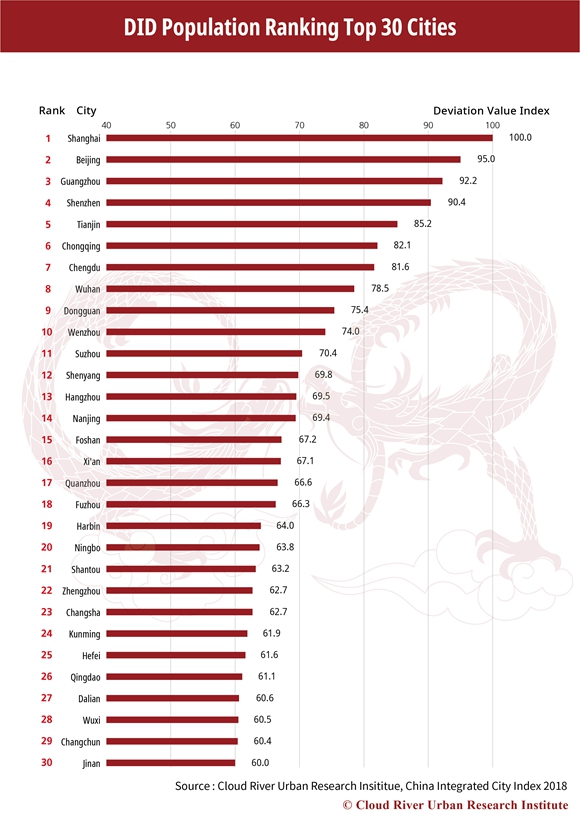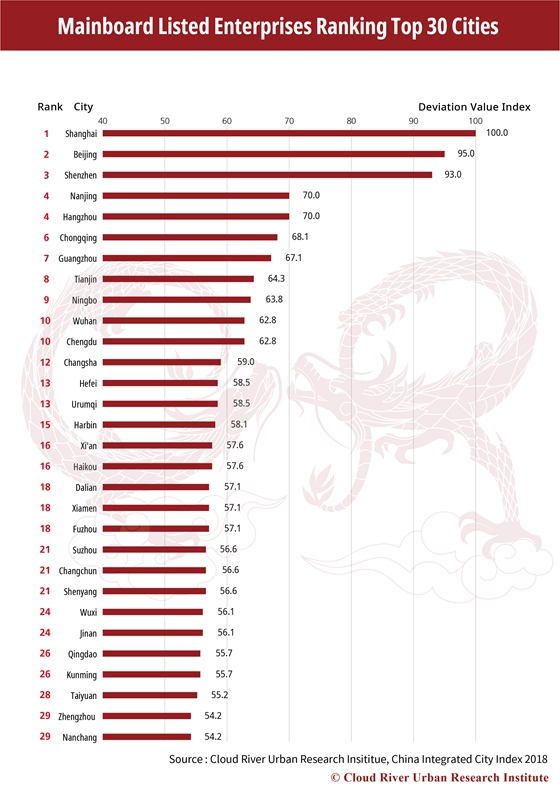'Polarization of driving forces' becomes a big trend for China's urban development
The spatial structure of China's economic growth is undergoing profound changes, with urban development showing obvious signs of "concentration" and "divergence."
The spatial structure of China's economic growth is undergoing profound changes, with urban development showing obvious signs of "concentration" and "divergence." Various functions are increasingly concentrated in leading cities. The more advanced the function is, the higher the concentration becomes. Meanwhile, the divergence between cities is constantly growing, meaning an increasing "polarization of driving forces."
Cloud River Urban Research Institute, a think tank specializing in urbanization research, published 12 sets of data regarding top 30 Chinese cities in different rankings in a report titled "China Integrated City Index 2018." The institute looked at the "polarization of driving forces" by analyzing the performance of 298 cities at the prefecture level and above based on major indicators and the concentration of functions.
Top 30 Cities by GDP
The 10 Chinese cities with the best performance in terms of GDP, namely Shanghai, Beijing, Shenzhen, Guangzhou, Chongqing, Tianjin, Suzhou, Chengdu, Wuhan and Hangzhou, account for 23.6% of the country's total GDP. The top 30 cities by GDP make up 43.5% of the total. In other words, the richest 10% of the 298 cities create more than 40% of the national GDP, and China's economic growth relies heavily on the top 30 cities.

Top 30 Cities by DID Population
Population density is a key indicator for the assessment of urban development. The China Integrated City Index introduced the concept of densely inhabited district (DID) to make an accurate and effective measurement of population density. The concept of DID refers to districts with a population density of more than 5,000 inhabitants per square kilometer.
The top 10 cities by DID population, namely Shanghai, Beijing, Guangzhou, Shenzhen, Tianjin, Chongqing, Chengdu, Wuhan, Dongguan and Wenzhou, account for 22.8% of the country's total DID population. The top 30 cities make up for 43.2% of the total. In other words, more than 40% of China's DID population is concentrated in the most populous 10% of the 298 cities.
It is more noteworthy that the GDP of the 298 cities is highly correlated with their DID population, with a correlation coefficient of 0.93, meaning a "complete correlation." Furthermore, 26 out of the top 30 cities by GDP are also on the list of the top 30 by DID population (in different positions). All these highlight the importance of DID population. Therefore, Chinese cities need to pay close attention to DID quality and scale.

Top 30 Cities with Most Main Board Listed Companies
As to the number of listed companies on the main boards of the Shanghai, Shenzhen and Hong Kong stock markets, enterprises from the top 30 cities account for 69.7% of the country's total, among which 39.6% are located in the top three cities, namely Shanghai, Beijing and Shenzhen. In other words, the top 10% of the 298 cities are home to nearly 70% of all the Chinese companies listed on the main board.
Main-board listed companies are more and more concentrated in large cities, especially core cities.


